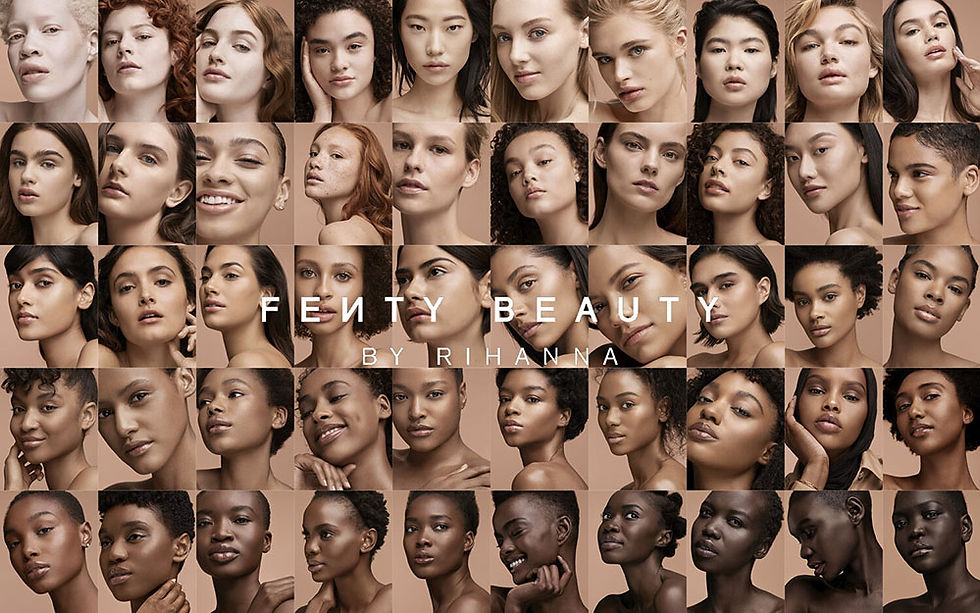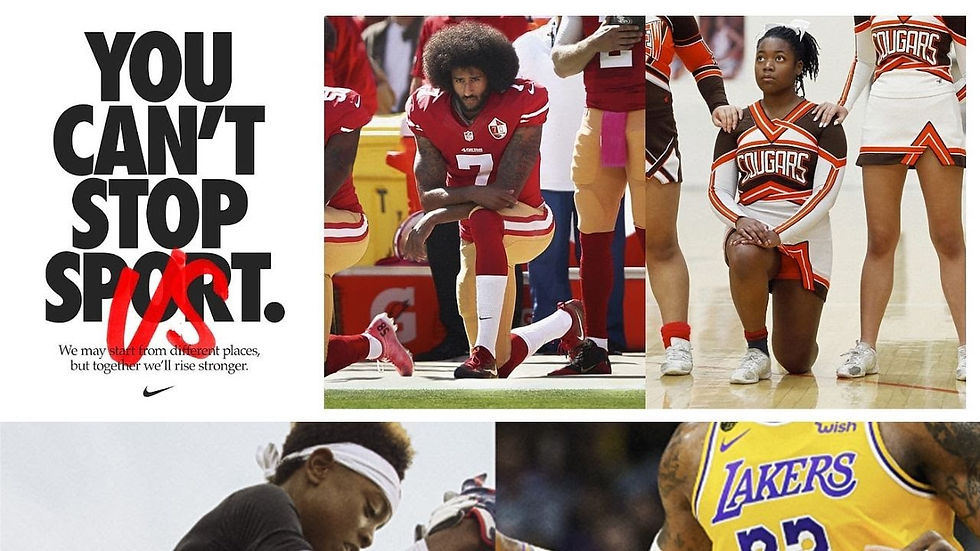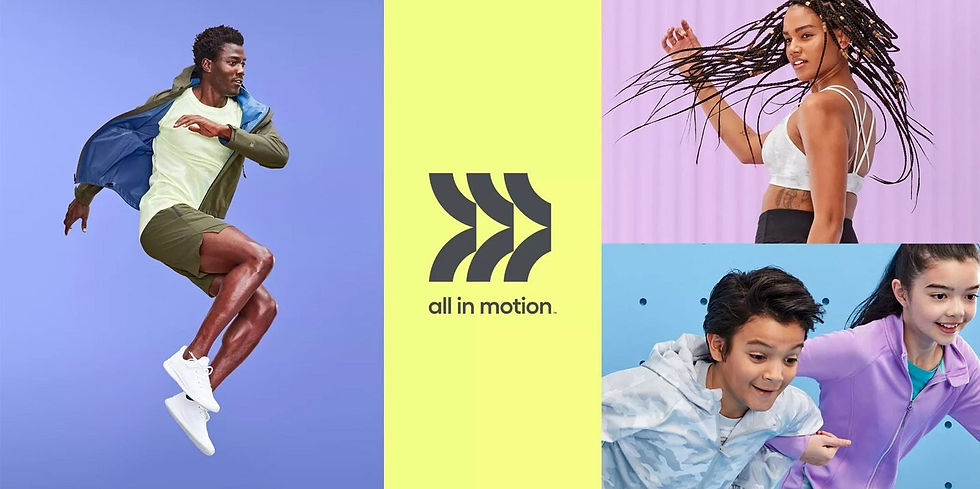Brands That Fail to Embrace Multicultural Marketing Will Lose Market Share in the Next 5-10 Years
- Nokuthula Hatoongo

- Nov 4, 2024
- 6 min read
In today’s globalised economy, brands are no longer competing in a homogenous marketplace. The world’s populations are becoming increasingly diverse, and as a result, consumer demands are evolving. In both the United States and the United Kingdom, diverse racial and ethnic groups now represent a significant portion of purchasing power. In the next 5-10 years, brands that don’t prioritise multicultural marketing strategies and fail to authentically connect with ethnically diverse audiences will find themselves losing market share to competitors that do. This article will explore the growing economic power of diverse groups, provide case studies of brands succeeding in this space, and outline why multicultural marketing strategies that work are now a crucial competitive advantage.
The Growing Economic Power of Diverse Audiences
In the last decade, the spending power of diverse groups has grown exponentially. According to a report by the University of Georgia’s Selig Center for Economic Growth, the buying power of African Americans in the U.S. reached $1.6 trillion in 2021, a staggering increase from $961 billion in 2010. Similarly, the Hispanic community’s buying power has surged to $2.7 trillion from $1 trillion a decade ago. In the U.K., the spending power of ethnic minorities has also increased, with estimates showing it reached £300 billion in 2022, driven by growing populations of Black, Asian, and other minority groups.
Projections indicate that these numbers will only continue to grow. By 2030, it is estimated that the total buying power of African Americans in the U.S. could reach $2.5 trillion, while the Hispanic community is on track to command a purchasing power of over $3.5 trillion. In the U.K., experts predict ethnic minority groups could account for nearly 20% of the overall spending power by the end of the decade.
The message is clear: ethnically diverse audiences are becoming more influential, and brands that fail to recognise and engage with them will be left behind.
Case Study 1: Fenty Beauty – Leading with Authentic Representation
One brand that has set the gold standard for multicultural marketing is Fenty Beauty. Launched in 2017 by Rihanna, Fenty Beauty revolutionised the beauty industry by offering an inclusive range of foundation shades that catered to all skin tones, particularly those of darker complexions that had long been ignored by mainstream beauty brands.

Photo Credit: Fenty Beauty
Fenty's "Beauty for All" campaign resonated deeply with diverse consumers, as it demonstrated an authentic commitment to inclusivity. The result? The brand generated $100 million in sales within its first 40 days and is now worth $2.8 Billion. By authentically addressing the needs of underrepresented groups, Fenty Beauty carved out a significant share of the beauty market and set a new standard for inclusivity, forcing competitors and major brands to re-evaluate their product lines and marketing strategies. By putting representation at the forefront of its brand ethos, Fenty continues to dominate the beauty industry, attracting a loyal and diverse customer base.
Case Study 2: Nike – Elevating Black Voices
Nike is another brand that has successfully embraced multicultural marketing, particularly with its commitment to social justice and elevating Black voices. In 2020, the brand launched its “You Can’t Stop Us” campaign, which highlighted the power of athletes of all races and genders while also addressing racial inequality. This campaign followed years of Nike championing Black athletes like Serena Williams and LeBron James in their ads. The campaign reflects the current social and cultural issues that were affecting the sports world at the time and beyond, such as racial justice, gender equality, environmental sustainability, and mental health. The video features athletes who are role models and activists for these causes.
The campaign celebrates the diversity and inclusivity of the sports community, showcasing athletes from different sports, countries, genders, races, ages, abilities, and orientations. This campaign was such a success it pulled in over 11 million views on YouTube in its first 24 hours of release.

Photo Credit: Nike
Nike’s willingness to engage in authentic conversations about race, justice, and inequality not only solidified its standing with Black consumers but also contributed to its market dominance. In fact, following their Colin Kaepernick "Just Do It" campaign, which supported the NFL player’s decision to kneel during the national anthem to protest racial injustice, Nike saw a 31% increase in sales. Their bold multicultural approach has kept them competitive while winning over diverse audiences.
Case Study 3: Target – Inclusive Marketing at Scale
Target is another example of a brand that has prioritised diversity and inclusion across its marketing strategies, from product development to advertising. Target’s “All in Motion” athletic brand is designed to cater to people of all body types, skin tones, and abilities. Additionally, Target’s marketing campaigns consistently feature racially and ethnically diverse families and highlight products designed by Black, Latino, and other minority creators.

Photo Credit: Target
This inclusive approach has paid off, with Target reporting growth in key demographic segments, especially among Millennials and Gen Z, who prioritise inclusivity and diversity. By authentically engaging diverse communities and embracing inclusivity, Target has continued to build loyalty and increase its market share. All in Motion is Target’s 10th brand to hit the $1 billion sales mark.
The success of brands like Fenty Beauty, Nike, and Target isn’t just about good marketing; it’s about creating authentic connections with diverse audiences. Today’s consumers demand representation and authenticity, and brands that fail to deliver risk alienating these growing demographic groups. In fact, a 2021 report from McKinsey found that companies with high diversity scores are 36% more likely to outperform their less diverse competitors. Furthermore, a study by ANA's Alliance for Inclusive and Multicultural Marketing found that relevant ads in resonant media programming can increase sales by 17% to 38% and trust by 46% to 52%. In contrast, brands that don’t evolve their multicultural strategies are suffering.
The Risks of Getting Multicultural Campaigns Wrong
80% of multicultural marketing campaigns fail to resonate with their target audience and the consequences of poor multicultural marketing are real, as several brands have learned the hard way. For example, H&M faced backlash in 2018 for featuring a Black child in a sweatshirt with the words "Coolest Monkey in the Jungle." The tone-deaf ad sparked outrage and led to calls for boycotts. Similarly, Pepsi’s infamous 2017 ad featuring Kendall Jenner was criticised for trivialising the Black Lives Matter movement, resulting in significant reputational damage.
These examples demonstrate that brands that fail to understand the cultural complexities of their audiences or that engage in inauthentic marketing risk losing consumer trust and revenue. The cost of getting it wrong is high, and consumers today are more than willing to switch their loyalty to brands that align with their values.
The Solution: Partnering with Multicultural Marketing Agencies
The solution for brands struggling to navigate the complexities of multicultural marketing is to work with specialised multicultural marketing agencies. These agencies have the cultural expertise to help brands authentically connect with diverse audiences, ensuring their campaigns resonate across different racial, ethnic, and cultural groups. By doing so, brands can foster loyalty, grow their market share, and stay competitive in a rapidly evolving landscape.
Working With A Multicultural Marketing Agency Provides Several Key Benefits:
Cultural Insight: These agencies bring a deep understanding of various cultures, ensuring your message lands authentically.
Consumer Trust: Authentic representation leads to stronger consumer connections and increased brand loyalty.
Competitive Edge: Inclusive brands stand out and gain a competitive advantage over those that overlook diversity.
Avoiding Backlash: By partnering with experts, brands reduce the risk of cultural missteps that can lead to costly PR crises.
Brands that want to remain competitive and gain market share in today’s diverse marketplace need to take action now. Don’t risk being left behind. Book a free 30-minute consultation with multicultural marketing experts at Identity Creates today. Our team will help you navigate cultural complexities and create strategies that authentically connect with your diverse audiences, allowing your brand to thrive in a rapidly evolving market.
As the world becomes more diverse, so too does the marketplace. In the next decade, inclusivity and multicultural marketing will no longer be optional — they will be essential for survival. Make sure your brand is ready for the future by working with experts who can guide you every step of the way.
Written by: Nokuthula Hatoongo


